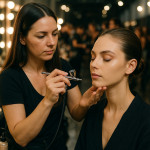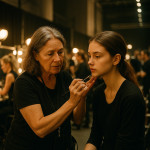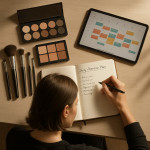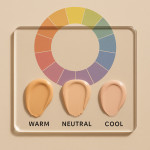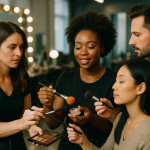From hygiene to diversity shades: essential reading for the modern maquilleur
A modern maquilleur juggles more than brushes and palettes: strict hygiene rules, ever-expanding shade ranges and business know-how now shape daily success. This guide distils best practices so you can protect clients, celebrate every skin tone and grow a reputation that books premium briefs.
Why hygiene and diversity define today's makeup careers
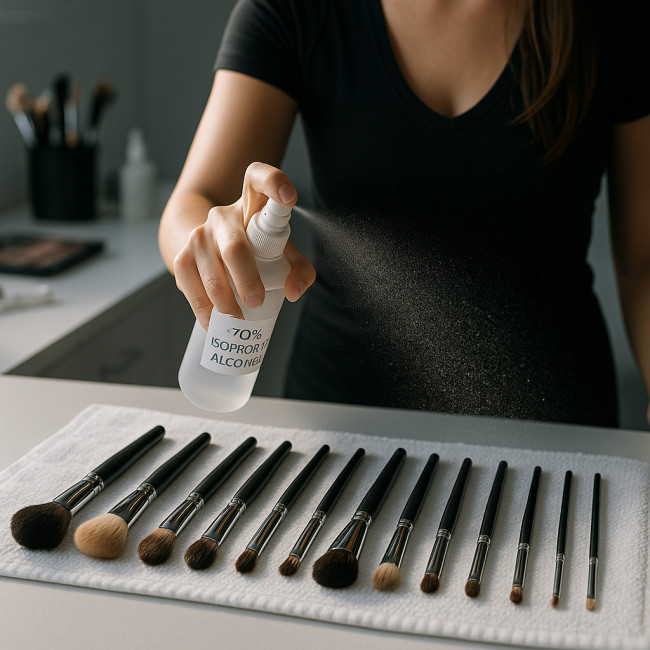
Social platforms amplify one bad skin reaction faster than any advertisement. Conversely, inclusive portfolios attract brand deals and loyal followers. By mastering sanitation and shade equity, you build trust that translates into repeat gigs and glowing reviews. The difference between a one-time client and a lifetime ambassador often lies in those invisible details: how freshly your brushes smell, how naturally a foundation melts into undertones, and how confidently you explain your process on camera. Remember, every backstage photo can become tomorrow's viral proof of your professionalism.
Hygiene essentials you cannot skip
1. Sterilise tools between faces—every time
- Brushes: wash with antibacterial soap, rinse, then spray 70 % isopropyl alcohol. Allow full air-drying before storage.
- Sponges: replace disposable wedges after one use; deep-clean reusable blenders with hot water and unscented detergent.
- Metal tools: wipe with medical-grade disinfectant wipes and store in a closed pouch.
2. Depot smartly to stop cross-contamination
Cut lipsticks into stainless pans and use a spatula; pump liquid foundations onto a palette instead of directly on skin. Depotting prevents bacteria transfer and helps you measure product usage.
3. Personal protection on set
- Wear a fresh mask when working close to the mouth and nose.
- Use nitrile gloves for prosthetics or acne-prone skin.
- Carry pocket hand sanitiser and reapply after touching phones or door handles.
4. Create a hygiene checklist for every job
A pre-flight list avoids last-minute lapses. Include brush count, alcohol spray, sealed disposables and waste bags. Update the list after each project to reflect real-world challenges such as outdoor dust or backstage congestion.
Mastering diversity: shade, undertone and texture
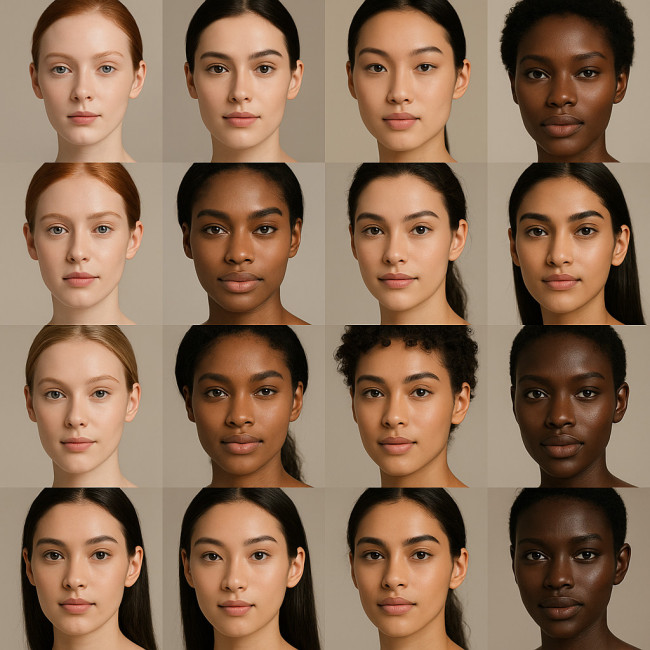
From porcelain-fair to deep ebony and every olive, golden or rose nuance between, the modern face chart extends far beyond the classic light-medium-dark trio. Stocking undertone-precise foundations signals a technical respect for melanin chemistry, but also a cultural one: people feel seen when their exact tone is ready on set. By photographing, cataloguing and frequently updating your shade library, you preview mastery to producers who must cast quickly. Aim to swatch each new formula on at least four different depths before adding it to your kit; that disciplined curation guarantees film-grade consistency under 4K lenses and prevents the dreaded grey cast that still haunts deeper complexions. Such commitment pushes your portfolio into the algorithmic sweet spot where representation meets flawless finish.
1. Why inclusive shade ranges are non-negotiable
Brands and directors increasingly demand visible diversity. Having foundations that match every undertone saves precious time under studio lights and positions you as a go-to artist for multicultural casts. It also aligns with campaigns that highlight representation, unlocking higher budgets.
2. Undertone decoding in seconds
Use the vein test: greenish veins = warm; bluish = cool; a mix = neutral. Always double-check against the jawline under natural light. For deeper complexions, prioritise red and olive undertone options to avoid an ashy finish. Deepening your colour theory knowledge? Read our companion guide on advanced undertone mastery.
3. Adapting textures for varied skin types
| Skin Type | Recommended Base | Application Tip |
|---|---|---|
| Oily | Oil-free liquid | Press with a damp sponge, then set with micro-milled powder. |
| Dry | Hydrating cream | Warm product on palette; buff gently with duo-fibre brush. |
| Combination | Serum foundation | Spot-apply matte primer only on T-zone. |
| Mature | Lightweight mousse | Use tapping motions to avoid settling into lines. |
Building a pro kit that shines on any brief
1. Curate hero products and multi-use pigments
Choose cream sticks that double as blush and lip colour, and translucent powders that flatter every shade. This keeps your kit light yet versatile—essential when racing between call sheets.
2. Organise for speed and safety
Use transparent, labelled pouches: one for clean brushes, one for used. Colour-code foundations (fair to deep) so assistants can retrieve shades fast. A tidy kit signals professionalism and slashes setup time.
3. Regularly audit expiry dates
Cream products harbour bacteria sooner than powders. Mark opening dates on tape; bin mascaras every three months. Such vigilance prevents infections and demonstrates care during client inspections.
Business perks of impeccable hygiene and inclusivity
- Client trust: Clean tools and perfect matches turn first-time bookings into retainer contracts.
- SEO lift: Portfolios featuring diverse looks climb search results—see how a strong first-impression layout converts curious browsers.
- Event readiness: Specialised know-how (e.g., festival-proof makeup) positions you for lucrative outdoor activations.
- Brand alignment: Agencies chasing inclusive campaigns search portfolios that display broad shade skills—our piece on inclusive skin tones details sample shoots that win pitches.
Keep learning: where to upskill quickly
Continuous education is easier than ever. Explore the Makeup Artist Training Hub for accredited micro-courses, or join peer labs to swap techniques. Mentorship programmes and monthly trend digests keep your hygiene protocols and shade libraries current. Subscribe to newsletters from product chemists, attend webinars on cosmetic microbiology, and experiment with emerging clean formulas to stay ahead of evolving industry standards.
FAQ
- How often should I deep-clean my entire kit?
- Schedule a full sanitation session after every multi-day production or at least once a week during busy seasons.
- What's the safest way to test foundation shades on clients?
- Swipe a fresh cotton bud with product along the jawline, then observe under natural and artificial light before deciding.
- Can I use UV sanitising boxes instead of alcohol sprays?
- UV boxes complement but do not replace chemical disinfection. Use both for maximum protection.
- How many foundation shades should a modern maquilleur carry?
- A minimum of 18—covering six depth levels (fair to rich) each in cool, neutral and warm undertones.
- What insurance covers hygiene-related client claims?
- Professional liability insurance with an explicit hygiene clause protects against skin reaction lawsuits.
Quick self-test: Are your hygiene habits production-ready?
Take action now
Audit your kit tonight, stock missing shades tomorrow and update your portfolio over the weekend. A clean, inclusive approach is the fastest route to high-profile bookings and word-of-mouth growth. Ready to level up? Join a peer lab, refresh your online gallery and let flawless hygiene and diversity expertise speak for you.
